This week, we tune into another early Terrytoon!
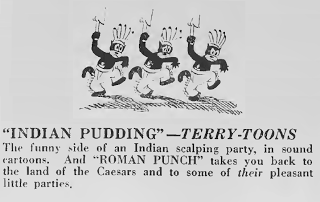 Indian Pudding was the fifth Terrytoon released by the studio, on April 6, 1930. The draft indicates the animation was finished within three weeks on January. Paul Terry’s silent Aesop’s Fables were known for their assembly-line productivity – with one new Fable released every week – but more time was allotted with the accompaniment of sound. The first scene of the lead mouse and his horse singing Stephen Foster’s “Oh Susanna” (animated by Frank Moser) uses practical yet primitive lip-sync. They weren’t fully adapted to the technology in some aspects; in scene 10, the mouse is clearly speaking to the Indian cat, but no sound emits from his mouth.
Indian Pudding was the fifth Terrytoon released by the studio, on April 6, 1930. The draft indicates the animation was finished within three weeks on January. Paul Terry’s silent Aesop’s Fables were known for their assembly-line productivity – with one new Fable released every week – but more time was allotted with the accompaniment of sound. The first scene of the lead mouse and his horse singing Stephen Foster’s “Oh Susanna” (animated by Frank Moser) uses practical yet primitive lip-sync. They weren’t fully adapted to the technology in some aspects; in scene 10, the mouse is clearly speaking to the Indian cat, but no sound emits from his mouth.
As with the early Terrytoons, Indian Pudding is a string of inter-connected gags, underneath a slight plot. As in countless entries, it’s “boy saves girl from imminent danger.” One of the more engaging Terrytoons in setting and theme, surprises abound in this film. The artist credited as “Sarka” handles a sinister moment in scene 12, when one enemy cat slowly sneaks up behind the mouse and readies his knife. He also animates a wonderfully executed shot where the cats slither away from behind the rocks in scene 27. The gag in scene 12-F, with the arrows shot at a bird’s rump, only to form plumage as the bird struts along, was reprised in the first official Popeye cartoon, I Yam What I Yam (1933); however, this gag may have earlier origins, presumably in comic strips.
Paul Terry’s older brother, John, is credited for a few scenes in the cartoon. He handles the bizarre Indian war dance (scene 25), in which the cats’ heads detach as they swing their tomahawks. However, John only animated up to the seventh Terry-Toon, Hawaiian Pineapple. (More information on John Terry here.
Cy Young, known for his special effects work for Disney, is credited for two shots in this Terrytoon. Young was born as Yang Xiye on March 7, 1897, in the County of Wuijang, Jiangsu Province of China. Recent research has shown that Young was the first animator in China – using either his Chinese name or S.Y. Young as his English name – when he left Jiangsu for Shanghai in the early ‘20s to work as an illustration designer for the Advertising Department of the British American Tobacco Company’s Shanghai branch. He designed posters, calendars and newspaper advertisements, but the company expanded around 1923.

Cy Young
Young arrived in the United States on October 1924, where he created titles for the Brayco educational film-strips in New York, produced by J.R. Bray. Young applied his precision for detail when he worked on technical animation at the Annapolis Naval Academy in 1924; likewise for medical animation for the Tuberculosis Society of America from 1926-28. By the early ‘30s, he animated on the first season of Terry-Toons, and is credited for designing characters on the main titles (many of which haven’t been seen in decades, due to the edited CBS re-issues).
Young continued to improve his artistry. He attended night classes for drawing and painting at the Art Students League. Around 1931, Fairmount Pictures distributed Young’s film, Mendelssohn’s Spring Song, filmed in the Brewster Color process. The quality and ambition of Spring Song impressed Walt Disney, who sought animators to specialize in effects animation at his studio. Young was hired on January 16, 1933.
Young handled effects animation on various shorts, and soon graduated to feature-length films, including Snow White and Fantasia. Young’s work on the later features diminished by the early forties, while his protégés, like Josh Meador and Dan McManus, were assigned more footage on Dumbo and Bambi. Young was terminated from the studio on May 28, 1941, the day before the infamous animators’ strike. He returned in July for a brief period, and left permanently by September 12.
After the strike, he enlisted in the U.S. Army Air Force Signal Corps, where he designed camouflage patterns on tanks, guns and aircraft during World War II. He also drew caricatures of service women that would be sent home to their families. After the war, Young worked as a freelance artist and clerk in the Air Force. Evidently, he hoped to launch different animated projects in Hollywood based on famous Chinese folklore, with piles of storyboards in his Los Angeles home. Young passed away on January 16, 1964; his death certificate noted the cause of death as “acute barbiturate poisoning.”
 Two different drafts, almost identical in scene description, exist for Indian Pudding. One copy indicates the cartoon originally began with “silhouette drawings,” which indicates a unique feature used in the early cartoons, in which a live-action orchestra, displayed in silhouette, performed before the action began.
Two different drafts, almost identical in scene description, exist for Indian Pudding. One copy indicates the cartoon originally began with “silhouette drawings,” which indicates a unique feature used in the early cartoons, in which a live-action orchestra, displayed in silhouette, performed before the action began.
These introductions were later excised for television and only exist in rare prints. Scenes 2 and 3 were also cut from this cartoon, since they contained anthropomorphic skeletons, highly abundant in many early thirties cartoons but presumably too macabre for the network.
Draft Version 1


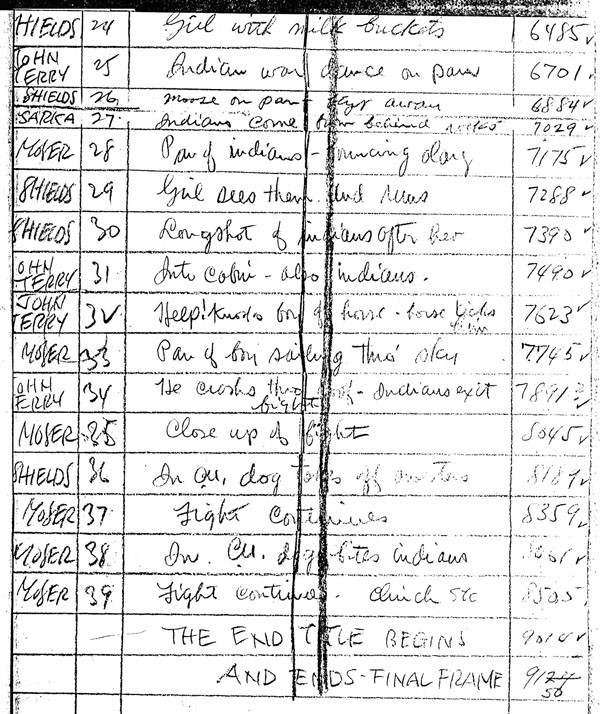
Draft Version 2
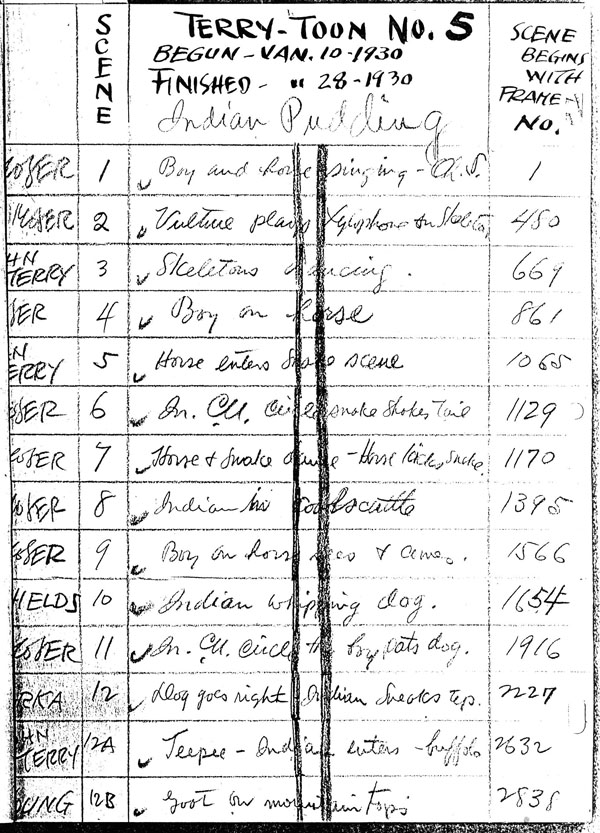
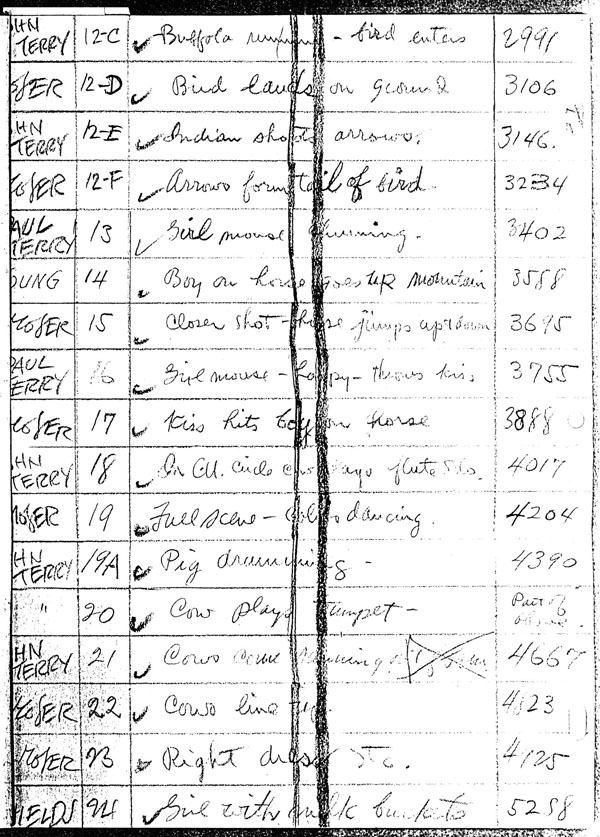
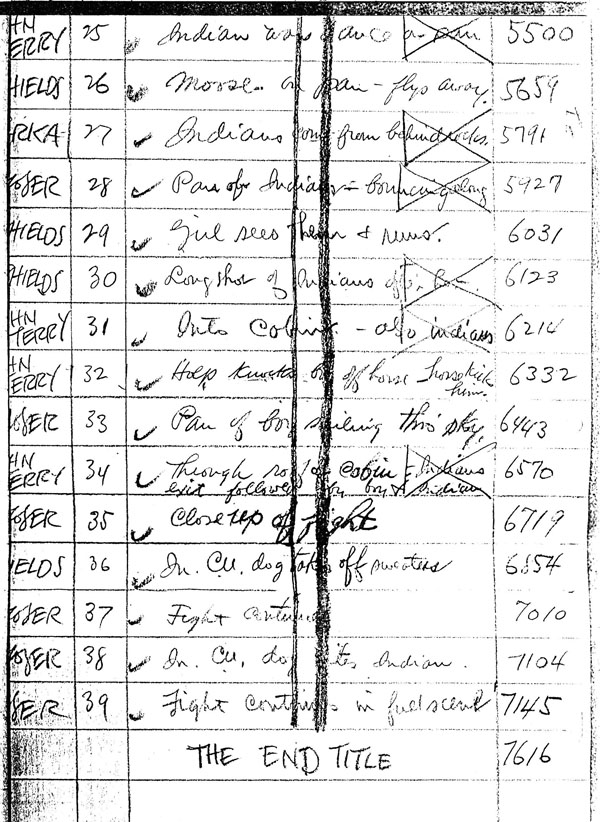
(Thanks to Mark Kausler, Steven Hartley and Don Yowp for their help.)


 DEVON BAXTER is a film restoration artist, video editor, and animation researcher/writer currently residing in Pennsylvania. He also hosts a
DEVON BAXTER is a film restoration artist, video editor, and animation researcher/writer currently residing in Pennsylvania. He also hosts a 




















































































not to get TOO off-topic here….but what year was all those early-30s titles changed to that jaunty (“Barker Bill”) jingle?? It was for tv distribution, obviously, yes??
Too bad about Cy Young. I wonder what scenes in “FANTASIA” he was responsible for. His proported projects based on Chinese folklore would have been interesting, especially in that first golden age of animation. I really like these early Terrytoons, though, and I second Uncle Wayne’s question about when the openings were tacked onto these cartoons and where they officially belonged. I imagine that they were part of mid-to-late 1930’s cartoons; a similar musical arrangement appears, of course, at MGM on the BARNEY BEAR cartoon by Rudy Ising called “BARNEY BEAR AND THE BEAVERS”…or was its official title actually “THE BEAR AND THE BEAVERS”?
Hans Perk posted the draft for Fantasia on his A Film LA blog a few years back. (Best to just look through the December 2010 entries, as they haven’t all been tagged “Fantasia” so they don’t all show up on a search: http://afilmla.blogspot.com/2010_12_01_archive.html) That should help you find out what Cy Young did on Fantasia. 🙂
The Bear And The Beavers